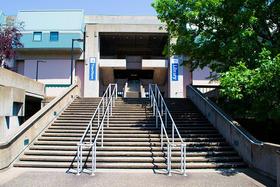New National Initiative Designed to Ramp Up Graduation Rates (2025 Update)
In 2025, as U.S. higher education faces tectonic pressures from demographic shifts, declining enrollments, and rising skepticism around the value of a degree, a new national initiative is emerging to accelerate graduation rates, especially at community colleges and broad-access institutions. This article updates earlier reporting, digs into evolving strategies, and assesses early impact as the initiative begins to scale.
Rationale and Context: Why Now?
The urgency of boosting completion has intensified in recent years. According to the National Student Clearinghouse, spring 2025 enrollment rose by 3.2 percent over spring 2024, led by a 5.4 percent rebound in community college enrollments. But that resurgence comes amid a long-term demographic shift: WICHE projects that the high school–graduate population will likely peak in 2025 and then decline in most states — heightening competition among institutions for new students. WICHE
Meanwhile, graduation rates remain stubbornly modest when full timelines and nontraditional students are counted. For example, among first-time, full-time bachelor’s-degree seekers, 64 percent finish within six years. Community colleges fare worse: fewer than 20 percent of community college students complete in two years. Complete College America+1 Many students struggle with accumulating debt, noncredit prerequisites, work demands, or lack of advising and pathway clarity.
Against that backdrop, the new initiative—centered around scalable student support, data alignment, and institutional capacity building—is shaping up to be a turning point.
Anatomy of the 2025 Initiative
The new national initiative is being led by Complete College America (CCA) in partnership with national nonprofits such as One Million Degrees (OMD), and is structured as a multi-year pilot aimed at embedding holistic student support at scale. GovTech
Key features include:
Wraparound coaching, advising, and financial support — The model draws on OMD’s work in Chicago, offering academic coaching, emergency grants, career advising, and case-management support embedded in student experience. GovTech+1
Institutional implementation support and co-design — CCA provides each partner college with implementation coaching, professional development, and data tools to monitor progress. Complete College America+1
Pilot launch and scaling cadence — Beginning fall 2025, Delgado Community College in Louisiana and colleges in Ohio are pilot sites. Other institutions will join over successive waves. GovTech
Equity and mission alignment — The pilot prioritizes historically underserved students, particularly in community colleges, rural regions, and institutions with equity gaps. ticas.org+1
Data alignment and goal-setting — The initiative links with CCA’s “Completion Goals & Funding Modeling Tool,” which monitors whether states and institutions are on track to reach attainment goals by 2030. Complete College America+1
Crucially, the initiative is not just about adding services but transforming institutional systems — aligning registration, advising, course sequencing, and resource allocation around student success.
What’s New in 2025 vs. Earlier Models?
Earlier efforts such as Completion by Design (backed by the Bill & Melinda Gates Foundation) focused largely on redesigning academic pathways and default enrollment sequences in community colleges. Community College Review The 2025 model embeds a more integrated package — blending financial, advising, and career supports — and places greater emphasis on scale and sustainability.
Additionally:
CCA’s Intermediaries for Scale commitment (part of a $100 million grant portfolio) continues to undergird capacity-building at partner institutions over a five-year period. Complete College America+1
The collaboration with OMD represents a national nonprofit-to-institution “platform” approach, aiming for replicability beyond pilot colleges. GovTech
Policy alignment at the state and federal level is gaining momentum: organizations like TICAS (The Institute for College Access & Success) are now advocating for scaling supportive models such as CASS (Comprehensive Approaches to Student Success). ticas.org
The shift in data practices — particularly the adoption of more nuanced outcome measures (4-, 6-, and 8-year metrics, including transfer paths) — ensures that colleges are held accountable for all students, not just traditional cohorts. appily.com+1
In short, the 2025 initiative aims to operationalize lessons learned over the past decade in a way that is structurally embedded and fiscally sustainable.
Early Signals and Challenges
Because the pilot phase begins in fall 2025, long-term outcomes are not yet available. But several early indicators and challenges bear watching:
Institutional readiness matters. Colleges with strong data systems, leadership buy-in, and baseline advising capacity are more likely to absorb and sustain the model.
Resource alignment is critical. Coaching and financial support cost real dollars; institutions must reallocate or secure funding for sustainability beyond grant cycles.
Cultural change is hard. Embedding supports means shifting institutional mindsets — from “students must catch up” to “the institution must scaffold success.”
Measuring success across pathways. The initiative’s success depends on adopting outcome measures that capture transfer, part-time, and adult learners. appily.com
Equity in rollout. If scaling disproportionately benefits better-resourced institutions, the equity divide could widen.
Yet the initiative arrives at a timely moment. Deloitte’s 2025 report on higher education highlights the imperative for radical rethinking — including shifting institutional resources toward mission-aligned functions like student services. Deloitte United Kingdom And national news coverage underscores the urgency: CCA’s new pilot expansion sparked attention as a novel nonprofit partnership approach to improving graduation rates. GovTech
Voices from Implementation
A few early statements underscore the ambition:
“Fulfilling the promise of college completion and career readiness requires us to break down barriers that students face … Through this new partnership, we’re providing institutions with the tools, support and guidance needed to help meet students’ needs in a more holistic way.” — Yolanda Watson Spiva, President, Complete College America GovTech
Meanwhile, administrators at pilot campuses cite opportunity:
“Embedding high-touch coaching within students’ academic journey gives us a chance to intervene early, especially for students juggling jobs, family, and part-time enrollment.”
Over time, quantitative assessments — retained credits, momentum metrics, completion rates — will reveal whether the ambitious design delivers.
What This Means for Students, Parents, and Educators
For students and families, the initiative holds promise of more coherent support — from day one — across advising, finances, and career alignment.
For educators and academic leaders, it signals a shift: success may be defined not just by teaching, but by integrating with institutional systems that help students navigate and persist.
For policy makers, it suggests scalable models that might align funding incentives around completion, not just enrollment.
For parents and prospective students seeking college data, external frameworks like the College Scorecard and NCES’s Outcome Measures provide more nuanced views of completion across pathways. appily.com And for those evaluating independent schools or feeder pipelines, platforms such as PrivateSchoolReview.com or BoardingSchoolReview.com can offer insight into how secondary preparation links to postsecondary success. (Internal link example: see academic outcomes discussions at BoardingSchoolReview.com.)
Outlook and Key Metrics to Watch
As the rollout progresses, key metrics will offer early clarity on success:
Momentum metrics (e.g. credit accumulation in the first 24 months)
Retention and persistence (fall-to-fall and term-to-term)
Completion rates at 3, 4, 6, and 8 years (inclusive outcome measures)
Equity gaps in outcomes (by race, Pell status, full-time vs. part-time)
Institutional cost-benefit analyses (ROI of supports vs. student success)
By 2030, as states work toward a common attainment benchmark (often 60 % of adults holding a credential), programs like this will be pivotal. CCA’s modeling suggests that many states are currently behind pace to meet those goals. Complete College America+1
If it succeeds, the 2025 initiative could mark a turning point — transforming scattered interventions into systemic infrastructure that helps more students graduate on time, enter the workforce, and build upward mobility.
In a moment of demographic headwinds and heightened accountability, this initiative represents a hopeful, data-driven bet: that by meeting students where they are and aligning institutional incentives around completion, we can bend the curve toward more equitable, timely degrees. Only time (and disciplined evaluation) will tell whether it becomes the next generation’s blueprint for higher education reform.














